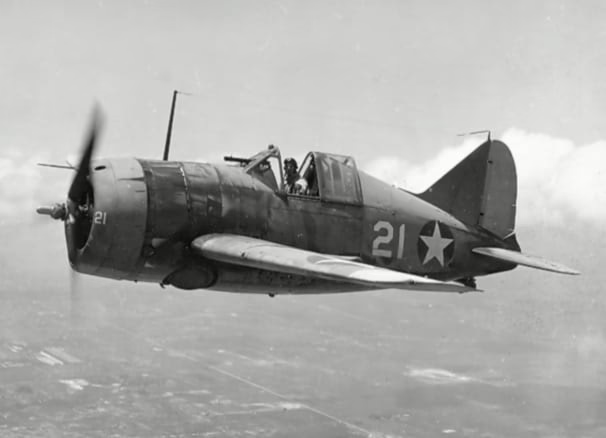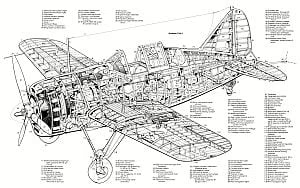Brewster F2A Buffalo History
Few aircraft in the annals of aviation history have had as much controversy attached to them as the Brewster F2A Buffalo. The history of the Buffalo is full of contradictions. Designed as a carrier based fighter the Buffalo saw combat only from land bases. Built for the Allies, its most successful use was by Finland, a co-belligerent of Germany. A significant part of the American ‘Arsenal of Democracy’, the Buffalo would be later used as an example (and excuse) for the Allies’ unpreparedness during the early dark days of the Pacific War. Yet on the Eastern Front, Finland achieved a victory ratio with the Buffalo higher than with more modern fighters.
The Brewster F2A Buffalo was the US Navy’s first monoplane fighter, but so far as that service was concerned that was about its only distinction, and the aircraft’s lack of favour is reflected in the small quantities that were built. Evolved as the Brewster Model 139, the prototype was completed to the designation XF2A-1 and flown for the first time in January 1938 with a 950 hp Wright Cyclone engine. In June fifty-four Model B-239s were ordered, as F2A-1s, with 940 hp R-1820-34 Cyclones. Eleven of these were delivered to the United States Navy (USN), nine of them joining Squadron VF-3 aboard the USS Saratoga from June 1939, and the remainder were released for export. These, plus one additional machine, were delivered to Finland (after reassembly by Saab in Sweden) by February 1940, and were fitted with four Browning machine-guns. They remained in front-line Finnish service until mid-1944.
The US Navy, following flight trials of Brewster’s XF2A-2 prototype (1,200 hp R-1820-40) in July 1939, ordered forty-three Brewster F2A-2 Buffalos to replace the F2A-1s sent to Finland, and most of these followed the Finnish example by increasing the armament from two machine-guns to four. Foreign orders for the were received from Belgium (for the B-339) and the UK (B-339E). None of the former machines reached Belgium, but twenty-eight from that order were eventually delivered to the British Fleet Air Arm, and the Royal Air Force (RAF) received one hundred and seventy as Brewster Buffalo Is.
The Netherlands East Indies Army Air Corps received seventy-two B-339Ds which served from spring 1941 in that theatre, and ordered a further twenty B-439s which, although completed, were never delivered. The F2A-3, ordered meanwhile for the US Navy, introduced so many equipment and structural changes and additions that its much higher gross weight severely affected both its performance and its controllability, and only one hundred and eight were built before production ended in March 1942.
Brewster F2A Buffalo Specifications
| Aircraft Type: |
| fighter |
| Dimensions: |
| wingspan: 35 ft, 1 in |
| length: 24 ft, 4 in |
| height: 12 ft, 1 in |
| Weights: |
| empty: 4,630 lb |
| gross: 7,055 lb |
| Power plant: |
| 1 × 1,100 hp Wright Cyclone R-1620 radial engine |
| Performance: |
| maximum speed: 300 mph |
| ceiling: 30,500 ft |
| maximum range: 950 mi |
| Armament: |
| 4 × 0.50 in calibre machine guns |
| Operational Use: |
| 1939–1942 |










